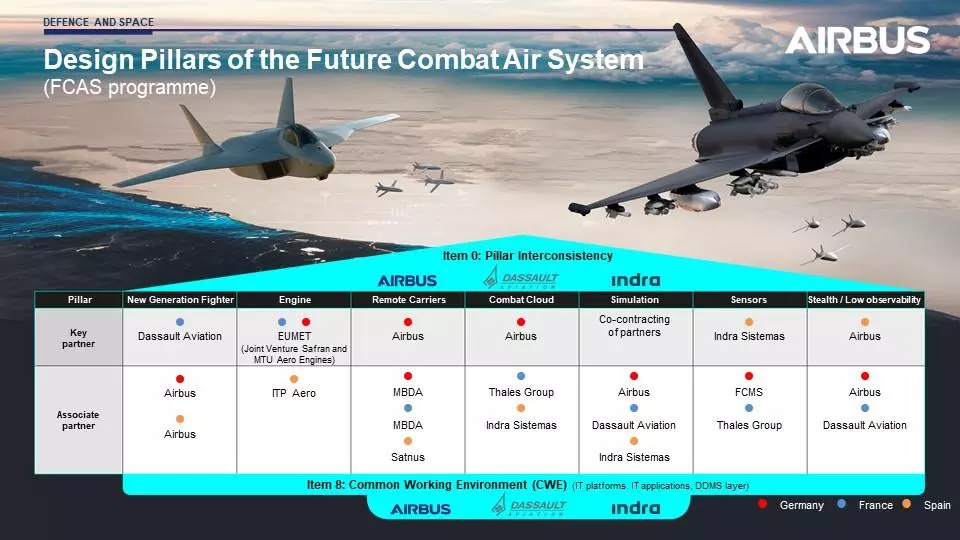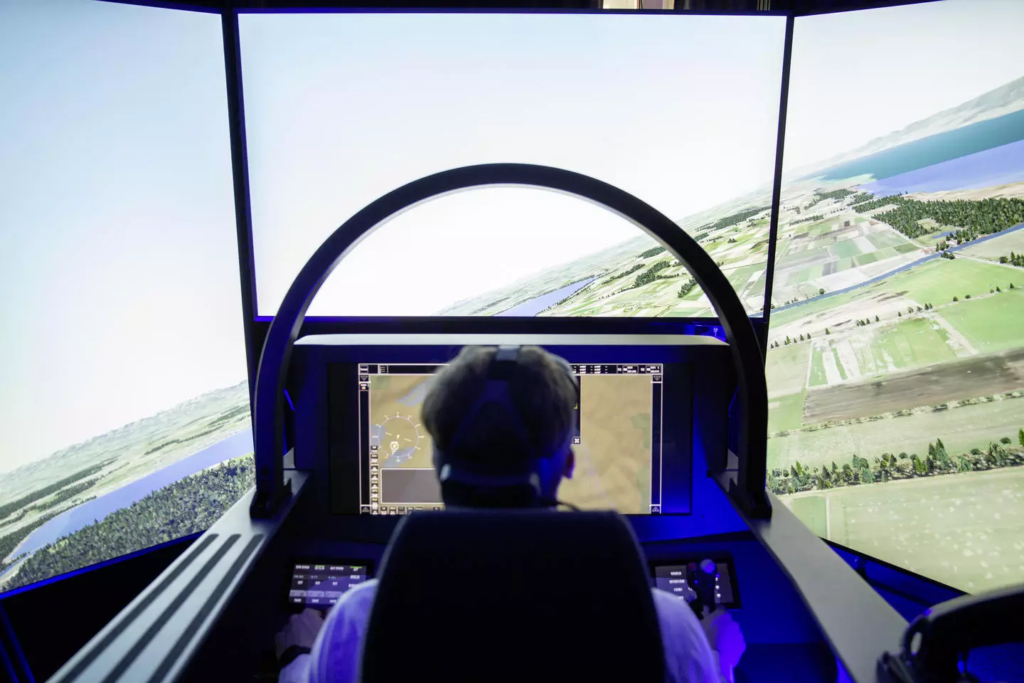Airbus Announces New Phase Of FCAS Demonstrator Development
Airbus announced on Monday that it had entered a new phase of development for the Future Combat Air System, with the development of flight demonstrators in Demonstrator Phase 1B now “in full swing”.
In the announcement, the company said that the flight demonstrators will have been further developed by 2025, ahead of the start of Demo Phase 2. This stage will see the first flights of two demonstrators, the remote carrier demonstrator in 2028 and the New Generation Fighter in 2029. Production for both is expected to begin in the 2030s.
Airbus currently has 250 people working on the Future Combat Air System, and is planning to expand its project headcount to 800 by the end of 2023.
Airbus describes its work in Demonstrator Phase 1B as distributed across four “plateaus” or integrated work areas:
- In Manching, with a focus on the New Generation Fighter, Remote Carriers and stealth technologies
- In Getafe near Madrid, where work is being done on the New Generation Fighter and stealth technologies
- In Friedrichshafen on Lake Constance, where work is being done on the combat cloud and remote carriers
- In Elancourt near Paris, where teams are working on the overall system of systems and the combat cloud
Work across the Future Combat Air System consortium is divided into individual pillars, with the “best athlete” principle selecting a leading company for each pillar, with other companies involved as partners. France’s Dassault Aviation will be leading the New Generation Fighter pillar with Airbus as a partner, with the work to be conducted at a plateau in Saint-Cloud, France.

Alongside the announcement, Airbus released a video of its current simulation efforts at the FCAS Prototyping Laboratory at Manching. At the lab, Airbus uses virtual missions to evaluate and refine the various systems and technologies being developed for FCAS, in addition to clarifying the operational requirements of the FCAS “system of systems” and ensuring the simulator itself functions correctly.

